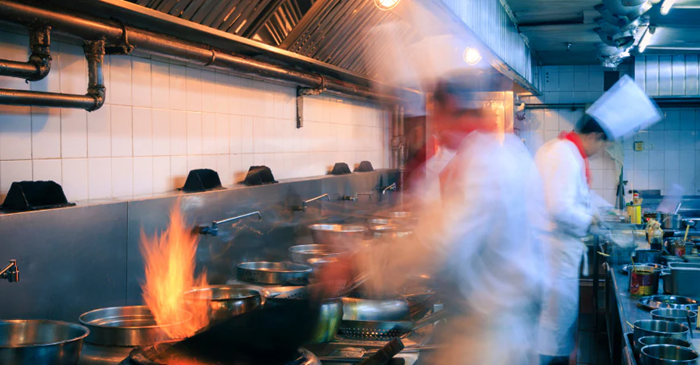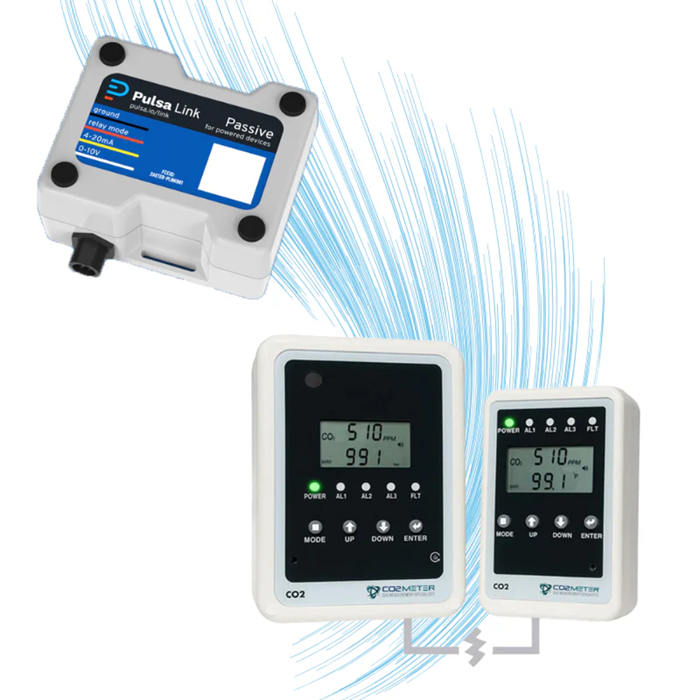Installing a CO2 safety alarm in a restaurant is a vital step toward protecting staff and remaining compliant with relevant safety guidance. Safety is just one aspect, however, with today’s most efficient QSR operators beginning to adopt a wider view of CO2 safety.

Image Credit: CO2Meter, Inc.
‘Behind the scenes’ incidents, such as leaking CO2 tanks, unexpectedly running out of CO2, or erratic cooler temperatures can result in downtime, disrupt service, negatively impact profits, and put both staff and customers at risk.
Centralized CO2 monitoring can make a key difference in helping to avoid these scenarios.
CO2 Monitoring Alone is Not Enough
CO2 plays a crucial but often overlooked role in most QSR operations, preserving ingredients, carbonating drinks, and powering equipment. However, leaks or outages can be dangerous and costly, particularly because CO2 is colorless, odorless, and undetectable without appropriate sensor technology.
Pulsa has simplified the monitoring of CO2 tanks, temperatures, and safety levels for restaurant teams and franchisees via a single dashboard, ensuring that nothing is missed.
Real-time insights are available on several key metrics, whether managing one location or several:
- Tank levels, ensuring no unanticipated ‘out of CO2’ errors
- Gas detection and air quality, with alerts should levels become unsafe
- Cooler or freezer temperatures, helping to prevent spoilage and related health risks
Integrating CO2 Safety Alarms with Real-Time Restaurant Monitoring
Using CO2Meter alarms is key to real-time restaurant monitoring. Pulsa functions in collaboration with CO2Meter’s Remote Storage Safety Alarm, using a small device called the Pulsa Link to pull live CO2 readings into an existing Pulsa Dashboard. This allows CO2 data to be tracked alongside tank levels and other data.

Image Credit: CO2Meter, Inc.
This highly beneficial integration takes just minutes to set up, allowing users to:
- Receive custom alerts when specific thresholds are reached
- Set notifications for specific teams or managers
- Evaluate historical data to determine usage trends or detect slow leaks
Advantages of Real-Time CO2 and Temperature Monitoring
The value of real-time monitoring goes far beyond a single tank for multi-unit operators and franchise owners. Safety and efficiency can be standardized across stores, affording supervisors and managers visibility over multiple units without micromanaging, and the ability to rapidly respond when something goes wrong.
This technology is already being used in the field by a number of organizations:
No CO2, no drinks! The Pulsa system takes pressure off our staff and alerts us when it’s time to call our supplier. It helps us stay focused on customers, not equipment.
Rick Soler, Asset Protection Supervisor, Stagg Restaurants / McDonald's Franchisee
We recently caught a CO2 leak in a walk-in before it became dangerous — all because of that real-time dashboard visibility.
Josh Edwards, Beverage Division Manager, Kint Beverage Concepts
Now we’re tracking everything from gas usage to peak demand trends. It’s helping us serve our customers better — and safer.
Dave McCarthy, VP & CFO, MacCarb
Monitoring CO2, Temperature, and Equipment Data
Implementing CO2 monitoring does not require overhauling the entire system. However, it is advisable to initially focus on the most important considerations, such as CO2 safety, tank monitoring, or temperature logs.
With this foundation in place, monitoring can be expanded as required. Pulsa makes adding devices across different locations easy, ensuring a rapid ROI. For example, even a single tank outage can cost hundreds or thousands in food waste, lost drinks, emergency fees, or reputation damage.
Integrated Restaurant Monitoring Improves Safety and Efficiency
Restaurants move quickly, with problems arising and worsening, often going unnoticed until too late. Integrating CO2 gas safety monitoring with other behind-the-scenes data like temperature and tank levels allows QSR operators to address issues before these become major problems.
By proactively monitoring CO2 in an integrated manner, restaurant operators can see more, know more, and ultimately run a smoother operation.
Acknowledgments
Produced from materials originally authored by Meghan Boots from Pulsa Sensors.

This information has been sourced, reviewed and adapted from materials provided by CO2Meter, Inc.
For more information on this source, please visit CO2Meter, Inc.